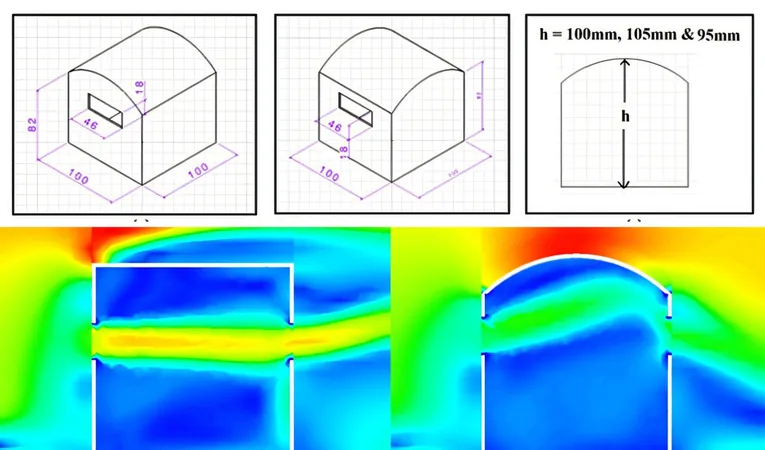
How to Feed Grass to Pigs, Chickens, and Fish: Revolutionizing Animal Nutrition
2024-11-10
Author: Nur
How to Feed Grass to Pigs, Chickens, and Fish: Revolutionizing Animal Nutrition
In contemporary agriculture, grass predominantly serves as feed for ruminants such as cows, thanks to their specialized multi-compartment stomachs adept at digesting plant fibers. However, recent innovations propose a groundbreaking shift: enabling other animals, such as pigs, chickens, and even fish, to reap the nutritional benefits of grass.
The Role of Biorefining
At the core of this revolutionary approach is a biorefining process. This technique employs a screw press to thoroughly break down plant matter, extracting valuable nutrients along with a liquid fraction. The result? A concentrated protein feed derived from grass that becomes digestible for animals with simpler stomachs. This advancement holds remarkable potential amidst rising demands for sustainable and economically viable animal feed.
Norway's Grass Advantage
Did you know that a staggering 50% of agricultural output in Norway comprises grass? This significant proportion has catalyzed innovations in animal feed, particularly at Norway's first pilot plant for green biorefining, inaugurated at Tuv experimental farm in Steinkjer. Audun Korsæth, the Director at NIBIO, highlighted the strategic vision to leverage both grass and abundant seaweed along the Norwegian coast, which boasts protein levels up to 30%.
A Game Changer for the Aquaculture and Livestock Sectors
As demand for alternative feed sources intensifies across the aquaculture and livestock sectors, researchers at NIBIO emphasize the urgent need to innovate. Senior Advisor Gjermund Bahr mentions that the biorefining process yields many nutrients compatible with the expectations of the aquaculture industry, hinting at its promising future.
Learning From Denmark
The pilot plant in Norway builds on successful experiences from Denmark, where researchers from Aarhus University have made significant strides. They have conducted trials demonstrating that pig feed blended with a grass concentrate containing 47% crude protein can safely replace soy without degrading meat quality. This could revolutionize feeding practices, reducing dependency on imported soy supplies.
Innovations in Feeding Trials
In addition to pigs, feeding trials have been initiated with chickens and cattle under the collaborative project "One Crop Two Diets." Preliminary results from studies involving dairy cows suggest that feed pulp—a fibrous residue from biorefining—may enhance milk production while also potentially lowering methane emissions from belching due to improved digestion.
Overcoming Economic Hurdles
Despite these advancements, challenges abound. Currently, the cost of grass protein in Denmark ranges two to three times higher than imported soy, prompting calls for further research to enhance economic viability. Kari Ljøkjel from Felleskjøpet Feed Development stresses the need for consistent and large volume production of high-quality feed, crucial for widespread adoption among farmers.
The Path Ahead: High-Value Products
Researchers are also exploring avenues to create new high-value products from residual materials generated during the biorefining process. As project leader Steffen Adler pointed out, the new plant in Norway serves not just as a production facility but as a platform for innovative research initiatives and industry collaborations.
As the agricultural landscape evolves, these breakthroughs could transform how we think about animal nutrition, leading to a more sustainable and economically viable future. Expect to hear more exciting developments as researchers continue their groundbreaking work!



 Brasil (PT)
Brasil (PT)
 Canada (EN)
Canada (EN)
 Chile (ES)
Chile (ES)
 España (ES)
España (ES)
 France (FR)
France (FR)
 Hong Kong (EN)
Hong Kong (EN)
 Italia (IT)
Italia (IT)
 日本 (JA)
日本 (JA)
 Magyarország (HU)
Magyarország (HU)
 Norge (NO)
Norge (NO)
 Polska (PL)
Polska (PL)
 Schweiz (DE)
Schweiz (DE)
 Singapore (EN)
Singapore (EN)
 Sverige (SV)
Sverige (SV)
 Suomi (FI)
Suomi (FI)
 Türkiye (TR)
Türkiye (TR)